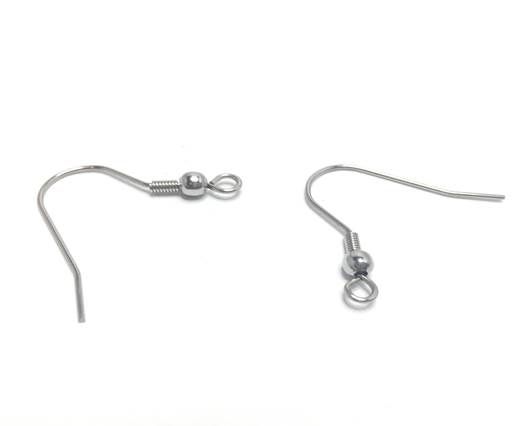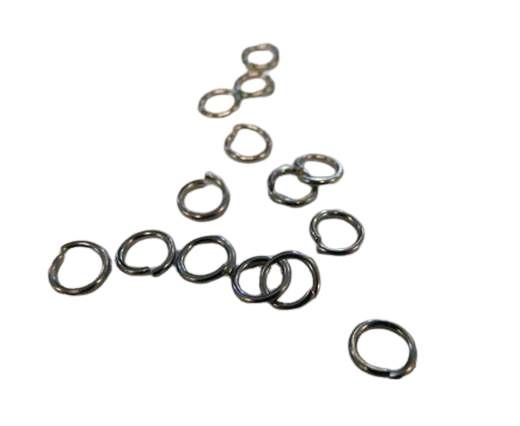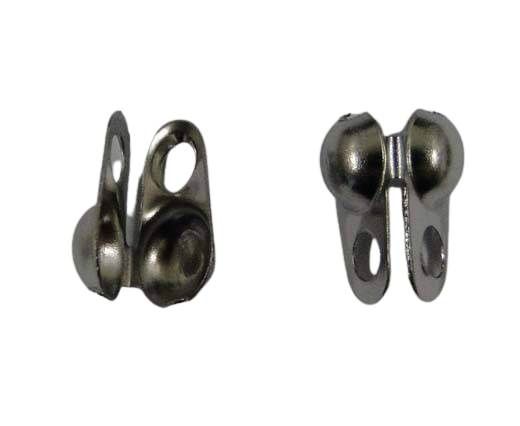Understanding Jewelry Findings
Understanding Jewelry Findings
Introduction to Jewelry Findings
Ever wonder what makes your jewelry stay in place? These small but mighty components are called jewelry findings.
Jewelry findings is a wide range of components such as clasps, earring hooks, jump rings, and more. Without them, your favorite pieces wouldn't be wearable.
The Origins of the Name "Jewelry Findings"
The term "jewelry findings" may sound a bit odd, but it has an interesting history. The word "findings" originated in the world of artisans and craftsmen. Historically, "findings" referred to the small tools and materials needed to complete a craft. In the context of jewelry making, it specifies those essential components that 'finish' a piece of jewelry.
During the 18th century, jewelers began to use the term more frequently to describe these small yet crucial parts. Findings were items they "found" necessary to assemble their creations. This nomenclature stuck, and today, it's an industry-standard term.
Cultural influences also played a role. In different parts of the world, the materials and types of findings evolved based on local customs and available resources. From ancient Egyptian clasps to modern magnetic locks, findings have diversified while retaining their foundational name.
Types of Jewelry Findings
When it comes to jewelry making, not all findings are created equal. Each type serves a specific function and adds a unique element to the design. Here are some common types:
Clasps
Clasps are used to fasten necklaces and bracelets. There are various types, such as lobster clasps, toggle clasps, and magnetic clasps, each offering different levels of security and ease of use.

Earring Hooks
Earring hooks come in several styles, including fish hooks, lever backs, and post earrings. They provide the foundation for dangling earrings and studs.

Jump Rings
These small metal rings connect different components of a piece. They are essential for attaching pendants to chains or linking various elements together.

Crimp Beads
Crimp beads secure the ends of stringing materials like beading wire. They ensure that beads stay in place and add a polished look.
End Caps
End caps finish the ends of multi-strand necklaces or bracelets. They are often used with leather cords, silk ribbons, and beadwork. End caps can be decorative and add a finishing touch to the overall design.
Each of these findings plays a crucial role in jewelry design, offering both practical benefits and creative opportunities to craft unique and stunning pieces. Understanding these various components empowers jewelers to bring their visions to life.
end caps sun enterprises
Discover Quality Jewelry Components at Sun Enterprises
At Sun Enterprises, we take pride in offering a vast selection of high-quality jewelry findings and components to fulfill all your crafting needs. Whether you're a hobbyist or a professional jeweler, our extensive inventory ensures you'll find the perfect clasps, earring hooks, jump rings, and more to bring your designs to life. Our commitment to quality means you can trust that each component is crafted with precision and durability in mind. Explore our collections today and experience the difference that excellent craftsmanship can make in your jewelry creations. Let Sun Enterprises be your go-to source for all things jewelry!
The Evolution of Jewelry Findings
Jewelry findings have come a long way since their inception. Initially, findings were simple and functional, made from readily available materials like bone, wood, and basic metals. However, as technology and craftsmanship advanced, so did the complexity and variety of findings.
Modern trends have introduced innovative materials like stainless steel, titanium, and even biodegradable options. With the rise of 3D printing, custom findings can now be designed and produced with intricate details that were once impossible to achieve.
Innovation isn't just limited to materials; it extends to design as well. Findings now come in various shapes, sizes, and finishes, allowing for greater creativity. For instance, magnetic clasps have gained popularity for their ease of use, especially in bracelets. Similarly, hypoallergenic materials have become a staple for sensitive skin types.
What to Call Jewelry Besides "Jewelry"
Jewelry is a catch-all term that encompasses various types of adornments. But what if you want to get creative with naming your pieces? Here are some alternative names to consider:
Adornments
This term highlights the decorative aspect of your pieces. It suggests that your creations are more than just accessories; they are works of art meant to adorn the wearer.
Baubles
Baubles convey a sense of fun and whimsy. This name is perfect for playful designs and pieces that are meant to add a touch of joy.
Trinkets
Trinkets are small, cherished items that often carry sentimental value. Use this term for personalized or custom-made pieces that hold special meaning.
Ornaments
Ornaments can be used to describe more elaborate and decorative pieces. They are perfect for statement jewelry that draws attention.
These alternative names can add a unique flair to your creations, making them stand out in a crowded market.
The Art of Naming Jewelry
Naming your jewelry pieces can be as creative as designing them. A well-chosen name can evoke emotions, tell a story, and attract customers. Here are some tips for naming your creations:
Reflect the Design
Choose a name that mirrors the design elements of the piece. If your necklace features ocean-inspired beads, a name like "Sea Breeze" could be fitting.
Consider the Materials
Highlight the materials used in your piece. A bracelet made from rose quartz could be named "Blush Elegance."
Evoke Emotion
Names that evoke emotions can create a deeper connection with potential buyers. Think of names like "Eternal Love" for wedding bands or "Joyful Blooms" for floral earrings.
Keep It Simple
While creativity is essential, simplicity can also be powerful. Names that are easy to remember and pronounce are more likely to stick in customers' minds.
Conclusion
Jewelry findings may be small components, but they play a significant role in the world of jewelry making. From their historical origins to modern innovations, these essential parts have evolved to offer endless possibilities for creativity.
Understanding the different types of findings can elevate your jewelry-making skills, while creative naming can make your pieces truly unique. Whether you're a seasoned jeweler or just starting, the world of jewelry findings offers endless opportunities for exploration and innovation.













































